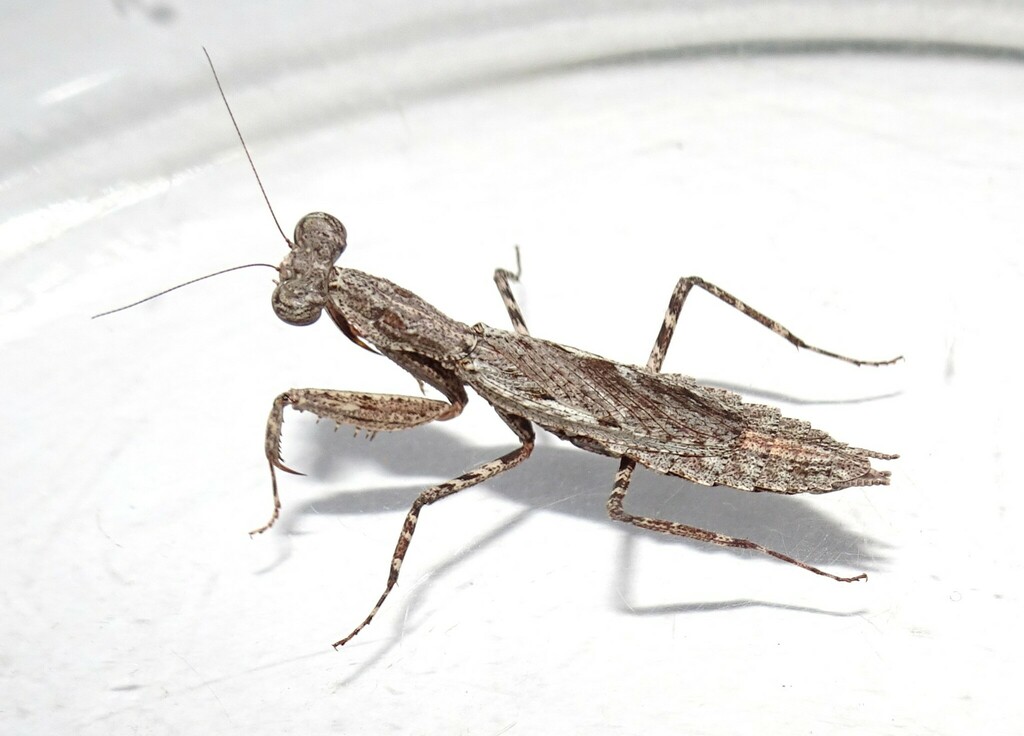iNaturalist November News Highlights
We’re excited to share iNaturalist impact highlights from November 2023! If you missed last month's highlights you can find them here.
Our theme this month is amateurs and professionals working together on iNaturalist. Entomology Today's coverage of a recent study by @michaelskvarla and @rayfisher reveals how access to iNaturalist data is transforming entomology research. We’re thrilled the scientific community is finding value in iNaturalist because engagement by experts is the catalyst for so much of the learning and impact coming out of the iNaturalist community. This theme of experts and amateurs working together on iNaturalist to make discoveries is beautifully captured in this story from Rhode Island featuring @landarch202, @jameswaters, @rbonoan and others. Similarly, this story on amateurs and experts sharing their excitement for sea slugs in Ireland features @bernardpicton, @libbykeatley and @tgosliner.
Science Discoveries

Meet Inimia nat or "I. nat" for short, a new species of Mantid named in honor of iNaturalist. This article describes @matthew_connors and @glendawalter’s collaboration that made this discovery possible. Keeping with our theme of scientists and amateurs working together to advance science, we’re honored @matthew_connors described the name choice as “a tribute to a new way of doing natural science”.
Other new species included a Panamanian grasshopper that went from being posted by @squiresk to being published by @kasalo, @skejo and colleagues in the short span of 9-months, a new bee from the Canary Islands thanks to the efforts of @carlathus, a new Zimbabwe orchid described in part by a posting by @bartwursten, and a new California scorpion posted by @brianhindsakafundad and described by @prakrit and colleagues.
There were also several first-living-photographs such as this Brazilian butterfly that was first photographed by @lcmarinho1 and this Chilean beetle first photographed by @mgargiulo complementing a new species description by @jlreyeshdez
Range Extensions

Keeping with our theme of experts and amateurs working together, we loved this story on @betweenthelyons, @dneubauer and others working together to discover a disjunct population of a rare plant in California.
There were many other stories this month documenting range extensions with iNaturalist including this profile on Montana State University researcher @cdelphia’s discovery of two new introduced bees. Other notable range extension stories included a southern hemisphere sea anemone found in California by @rjadams55, a frog island hopping from Trinidad to Tobago spotted by @wildlife_tobago, Blue Land Crabs moving up the coast into South Carolina, a wasp range expansion in Ukraine and a range expansion of a rare Peony in Russia.
Even more fundamental than documenting shifts in distributions, many studies use iNaturalist to advance basic understandings of species distributions. For example, this study used iNaturalist to fill in gaps in a cosmopolitan spider’s distribution across Mexico. Similar studies helped describe the Mexican distributions of nightshade and amaranth. Stories relayed @paul_crump’s use of iNaturalist to understand the distribution and rarity of indigo snakes in Texas, @kylieafrancis’s work understanding slime mold distributions in Australia, and @paul_prior’s record of a locally uncommon butterfly in the Toronto region. Other stories covered efforts to understand the ranges of endangered Whooping Cranes in Texas, threatened Whitebark Pines in Canada, rare Short Bigeyes off Martha’s Vineyard, and declining Monarch butterflies in California.
Invasive Species Science

When range expansions become detrimental to the ecosystems they move into, they can be considered invasive species. This study describes ecologist’s @matthewmo back and forth with observers on iNaturalist to document a newly established population of snapping turtles in Hong Kong.
Other stories and studies highlighted monitoring invasive insects and invasive plants in Spain, @jess_likes_bugs’s work promoting the Invasive Species Council Bug Hunt in Australia, the dispersal of invasive weedy plants in Argentina, and @ccutting’s work controlling invasive Giant Hogweed on Prince Edward Island.
We loved this New York Times story highlighting @krystalrose13’s work monitoring invasive marine invertebrates in Connecticut with iNaturalist. We also noticed more stories this month on using iNaturalist to track the invading Joro spiders in USA today and Al.com.
Life History Science

iNaturalist data is very useful for understanding the life histories of species. For example, this study by @chrisrmoreira highlights the use of iNaturalist to understand the life stages and host plants of butterflies and moths from Ecuador.
Likewise, this presentation by @antomology used iNaturalist data to understand larval insects known as leafminers and their host plants while this paper by @tracysfeldman used iNaturalist images to understand how to distinguish sawfly larvae. On the subject of host plants, we loved @bradleyallf’s whoeatswhom.org mashup using iNaturalist data to surface interactions between species and the species they eat.
Other stories involving iNaturalist on the life histories of species included this article on the sex life of Lobelias by @matthewcoffey, this story on juvenile newt migrations in California, and this story on the unfortunate death by stranding of Ocean Sunfish in Australia.
Land Use and Climate Change Science

Don't miss this article on @hoosierherpenthusiast’s efforts using iNaturalist to understand bird deaths from window collisions on Purdue campus.
This month there were several other studies on how changes to the landscape impact bird populations ranging from the diversity of birds in Colombia to the reintroduction of a hornbill in Singapore.
In this story covering a Nature Ecology & Evolution study on understanding species sensitivities to climate change, the authors encourage the use of iNaturalist to generate the kinds of distribution data their analysis relied on.
Conservation and Monitoring

This Public Radio piece profiled @shawnhunter’s efforts using iNaturalist to protect the Diana Fritillary. According to @shawnhunter insecticide use to eliminate the invasive Spongy moth is one of the drivers causing Diana Fritillary to decline. In a recent talk, @joe8, the host of Growing a Greener World, described how using iNaturalist to distinguish beneficial from detrimental insects can help gardeners reduce their use of pesticides.
There were many other stories about the use of iNaturalist for conservation and monitoring including this study by @thea30, @maribritt and colleagues describing their work with the Minnesota Bee Atlas to help inventory and monitor bees across Minnesota.
This story on a recent paper by @johnascher and colleagues describes a new workflow for moving from iNaturalist and other GBIF datasets to conservation assessments for bees. Similarly, this paper describes using iNaturalist in Diptera recording schemes across Europe.
Other studies and stories described using iNaturalist to inventory butterflies in Ecuador, @marco_varricchione and colleagues work monitoring marine species in Italy, @astyles and colleagues work inventorying the Basin and Range National Monument in Nevada, and @kkrievins and colleagues work monitoring lake surgeon in Canada’s Shawanaga First Nation Georgian Bay Biosphere Reserve.
iNaturalist Impact on AI Research

We continue to be awed by all the exciting new research combining iNaturalist images in new AI analysis tools. We’re calling this the "Phenotypic Revolution" as it mirrors the Genomic Revolution in the 2000’s that led to rapid advances in the fields of Ecology and Evolution. Last month we highlighted machine learning insights into mimicry of spiders, this month we're highlighting a fantastic paper covered in Science Magazine that analyzed iNaturalist images in a machine learning model to reveal the evolution of striking eye-colors in cats.
The iNat dataset continues to be a standard benchmarking dataset in numerous AI papers such as one by Mansfield et al. and this one by Liang et al. and is even used in research on Generative AI. This interesting article discusses the impact of the the AI revolution and tools like iNaturalist on environmental, social and governance jobs.
iNaturalist and Social Science

An article in Nature Human Behavior that was covered by MongaBay and the New York Times shows how past discriminatory housing policies continues to resulted in fewer bird sightings using iNaturalist and eBird data. Similarly, this paper used iNaturalist data to understand nature based recreation patterns on Malta.
Other creative used of iNaturalist data to understand human behavior included this paper characterizing the insect species mentioned in Haikus, and this paper using Network Analysis techniques to understand patterns in a subset of the iNaturalist community from Western Canada.
November iNaturalist Events

There was great coverage of the 2023 Great Southern Bioblitz in articles about activities in Coffs Harbour, Australia, featuring @nicklambert and in Geelong, Australia, featuring @rover-rod. We enjoyed coverage of @charlottekirchner and colleagues use of iNaturalist on Hurtigruten Expeditions to Antarctica and coverage of @edenea and @dnolan6’s organizing the Fall 2023 George Mason University Bioblitz.
iNaturalist’s Education Impact

iNaturalist continues to be used in classrooms around the globe including this Biology course in Slovenia and this Biostatistics course in Pennsylvania. This study by @natashacerettimaria and @matheusmsantos describes their work using iNaturalist to promote environmental education in urban parks in Brazil. This story profile’s @brentpease’s work integrating iNaturalist into Southern Illinois University's Wildlife Monitoring courses by organizing Bioblitzes.
Thanks to everyone who hosted iNaturalist trainings this month including @milliebasden, @patsimpson2000, and @markkjames in San Diego, @twainwright through the Oregon Native Plant Society, and @akilee in Massachusetts.
iNatters in the News

We loved this profile on @anthcolangelo and his work getting the public using iNaturalist to monitor pollinators through the Pollinator Partnership Canada. Don’t miss this podcast where @sheriff_woody_pct shares fun flora facts. This story profiles iNatters @sunfishmoonlight and @mendelskulski’s work hosting the Future Ecology podcast series.
This story profiles @varad’s work organizing citizen-scientists in India and this story profiles @orwinr and @lindy4 use of iNaturalist and other platforms at this year’s Australian Citizen Science conference. We loved this story by @klpbenson about an encounter with a strange caterpillar.
On the subject of ecotourism, this story profile’s @amymoonlady’s work promoting nature tourism in Texas while this video shows highlights from a recent ecotourism expedition across Nigeria by @agboola, @omotee and others.
Thank you to everyone who participated in iNaturalist this November! Your support makes it all possible.






























